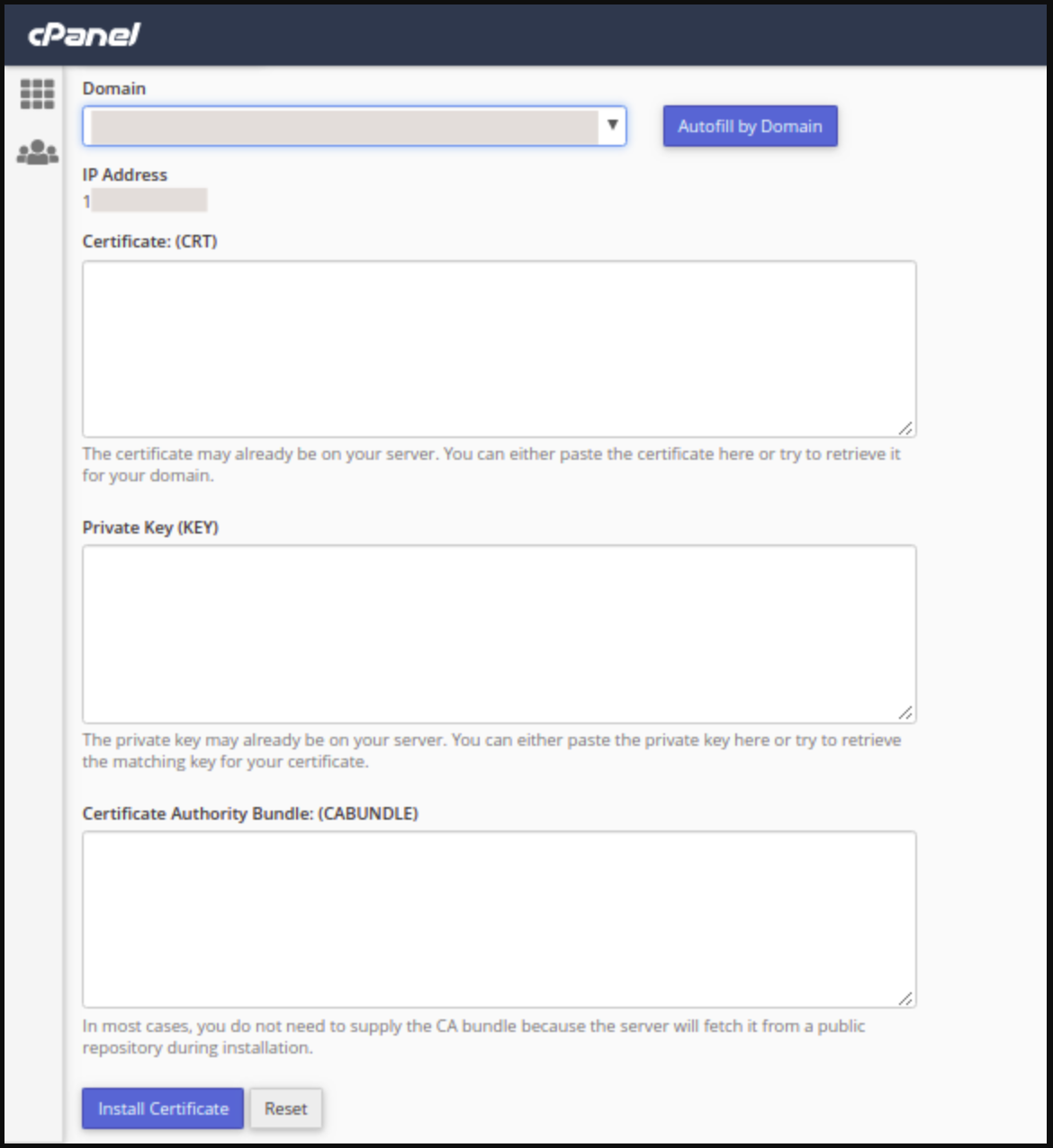SSL Deployment on Domain using cPanel

1. Log into your cPanel account
The first step is to login to your cPanel account, this can typically be accessed by going to https://Server-IP-Address:2083

After navigating to your cPanel login page, enter your Username/Password and click Log in.
2. Navigate to the SSL/TLS Manager
You can access your SSL/TLS Manager page by scrolling down to the Security section and selecting the SSL/TLS button.

Note: You can also navigate to the SSL/TLS Manager page by utilizing the Search Feature at the top right of the cPanel home page and searching for “SSL”.
3. Generate a Certificate Signing Request (CSR)
Click SSL/TLS Manager > Certificate Signing Request (CSR)

Using the CSR Legend on the right-hand side of this page, fill out the “Generate a New Certificate Signing Request form”.
Click the Generate button to generate the new CSR.
cPanel shows you the CSR in the top box under SSL Certificate Signing Request (don’t worry about the contents of the box below it, you don’t need it).
Copy everything in the top box.
Save a copy of your CSR. The CSR will be needed during the online order process. You’ll be asked to copy-and-paste your CSR into a special CSR box.
Regarding How to purchase SSL using E2E Portal Click Here
4. Select “Manage SSL Sites”
Your SSL/TLS Manager page will allow you to manage everything related to SSL/TLS configuration for cPanel. The “Manage SSL Sites” Hyperlink is located underneath “Install and Manage SSL for your site (HTTPS)” shown below.
5. Select your domain
Change the Domain drop-down to the appropriate domain name that you want to install your SSL certificate on.

6. Copy and paste your certificate files
Once you have your domain selected, you just need to copy and paste your individual certificate files into the appropriate text box(s) pictured below.

Certificate (CRT) – This is your server certificate that was issued to your domain(s) from E2E Networks Myaccount Panel.
Note
If you received the certificate in a ZIP file, click “Extract All” and then drag your server certificate into a text editor such as Notepad. This will allow you to copy all text contents needed including “—–BEGIN CERTIFICATE—–” and “END CERTIFICATE—–”.
Private Key (KEY) – This is your private key that was created during the generation process.
Note
cPanel should automatically fetch the Private Key (Key) text if you previously created the Certificate Signing Request (CSR) in the “Generate, view, or delete SSL certificate signing requests” section of your SSL/TLS Manager and selected the correct domain name above in the dropdown.
Certificate Authority Bundle (CABundle) – This is your intermediate certificate that allows browsers and devices to understand who issued your trusted certificate.
Note
cPanel should automatically fetch the CA Bundle from a public repository. If not, download the appropriate CA Bundle from your E2E Networks MyAccount Panel.
7. Click “Install Certificate”
Once you have the correct certificate files in the appropriate text boxes, simply click the blue “Install Certificate” button.
Congratulations! You have successfully installed your SSL certificate! To check your work, visit the website in your browser at https://yourdomain.tld and view the certificate/site information to see if HTTPS/SSL is working properly. Remember, you may need to restart your server apache services for changes to take effect.
To check your server’s SSL configurations more thoroughly, use the online SSL Checker Tool or contact our Support Department for additional assistance.

